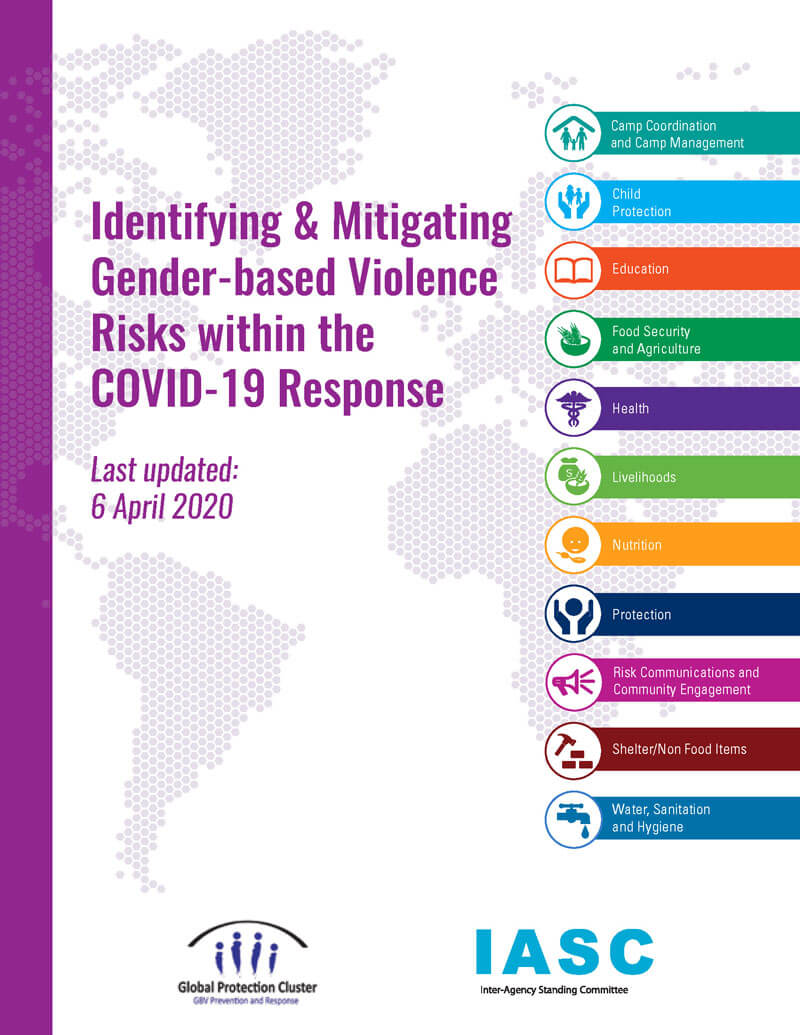There is already an unsettling amount of information on GBV occurring against the backdrop of the COVID-19 outbreak. It is also becoming increasingly clear that many of the measures deemed necessary to control the spread of the disease are not only increasing GBV-related risks and violence against women and girls, but also limiting survivors’ ability to distance themselves from their abusers as well as reducing their ability to access external support. In addition, it is clear from previous epidemics that during health crises, women typically take on additional physical, psychological and time burdens as caregivers. As such, it is critical that all actors involved in efforts to respond to COVID-19 – across all sectors – take GBV into account within their programme planning and implementation. The majority of the resources contained on this page relate to COVID-19 and GBV risk mitigation across sectors. For additional resources on COVID-19 and GBV specialized services, please visit the GBV AoR website.
This new addition to the GBV Guidelines Knowledge Hub provides practitioners with key resources to support the integration of GBV risk mitigation into COVID-19 response. It will be frequently updated as the crisis unfolds. Kindly contact gbv.guidelines@gmail.com to submit new resources or should you have any questions.

This tipsheet identifies key, sector-specific GBV risks that we believe are likely to occur and/or be exacerbated during the Covid-19 response, along with recommendations on how to mitigate these risks.
It is meant to be a living document and we intend to update it frequently as new information and promising practice emerges from the field. So please stay in touch - reach out to the GBV Guidelines team with any questions or concerns, and please do share information with us about what is or isn't working.
Integrating GBV risk mitigation into all aspects of humanitarian response ensure programs and services are safer, more accessible, more acceptable and of better quality. In short, they improve sectoral specific outcomes and targets while improving accountability to affected communities. GBV risk mitigation can be monitored and evaluated using existing program M&E frameworks. This page includes tools and methodologies, such as safety audits and measuring safety perceptions, that can be adapted and integrated. This area of practice is developing rapidly - stay tuned for additional resources.


This site is always being updated, so please check back often for new additions, tools, and resources!
Copyright © 2024 • GBV Guidelines